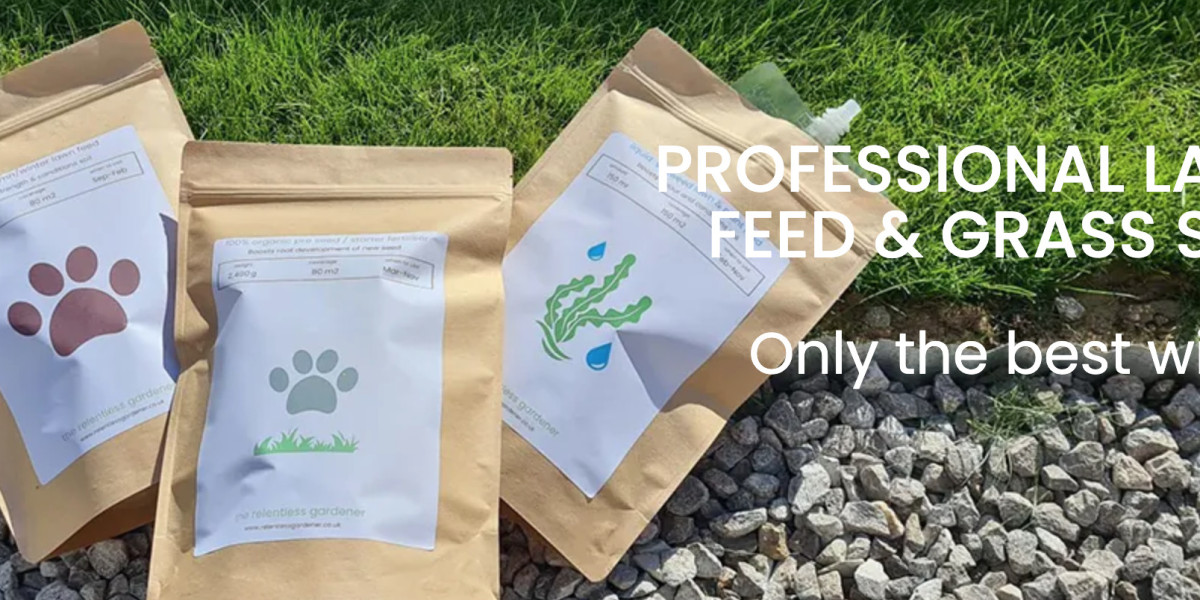Unlocking the secrets to a lush, vibrant lawn requires a nuanced understanding of seasonal nuances and precise care.
This comprehensive guide delves into the common pitfalls of lawn maintenance in the UK, exploring the repercussions of mistimed practices. From the critical timing of grass seeding to the pitfalls of feeding during frost and the often-overlooked impact of mowing height, we dissect the mistakes that can compromise your lawn's health.
Dive into essential insights on aeration, snow removal, and the consequences of leaving heavy items, offering a roadmap for a resilient and thriving lawn in the diverse climate of the United Kingdom.
Applying Grass Seed too late (or early)
Applying grass seed in the UK too late or early in the year can impede successful germination. Planting too early may expose seeds to harsh weather, limiting growth, while late seeding reduces the time for roots to establish before winter.
Early plantings risk seedlings encountering frost, inhibiting development. Conversely, late seeding diminishes the growing season, making it harder for the grass to establish a robust root system.
Timing is critical; seeding during optimal conditions ensures proper establishment and vitality, enhancing the chances of a healthy lawn.
Feeding during snow or frost
Feeding the lawn during snow or frost in the UK is a mistake due to the risk of nutrient runoff and wastage. In cold weather, the grass is dormant and less capable of utilizing fertilizers efficiently.
The frozen or snow-covered ground inhibits nutrient absorption, leading to runoff into waterways and environmental harm.
Applying lawn feed during these conditions is not only ineffective for the lawn's immediate needs but also contributes to pollution. It's advisable to feed the lawn before the onset of winter to ensure nutrients are available when the grass can actively absorb them, promoting a healthier and more resilient lawn in the UK.
Mowing too low
Mowing too low is a mistake as it weakens the grass in the UK by reducing its ability to photosynthesize and develop a robust root system.
Scalping the lawn exposes the soil, making it susceptible to moisture loss and weed invasion.
In the UK's damp climate, shallow grassroots struggle to absorb nutrients and water efficiently.
Mowing at an inadequate height also invites diseases and pests. Maintaining a slightly taller grass height promotes healthier growth, enhances resilience against adverse weather, and fosters a lush, vibrant lawn in British landscapes, contributing to its overall durability and aesthetic appeal.
Not feeding the lawn with a low-nitrogen lawn feed
Not feeding the lawn is a mistake as it deprives the lawn of essential nutrients crucial for winter resilience and spring revival. Winter fertilizer applications provide the grass with needed nutrients for root development and overall health.
Nutrient deficiencies make the lawn more susceptible to stress, diseases, and harsh winter conditions. Proper fertilization fosters strong roots, improving the grass's ability to endure colder temperatures and rebound vigorously in the spring.
Ignoring this crucial step diminishes the lawn's overall health, making it more vulnerable to damage and hindering its capacity to thrive during the challenging winter months and beyond.
Leaving leaves and sticks on the grass
Leaving leaves and sticks on the grass is a mistake as they create a barrier hindering sunlight, airflow, and nutrient absorption.
This impedes photosynthesis, stifling grass growth and promoting disease. The debris also traps moisture, fostering a breeding ground for harmful fungi and pests. Additionally, prolonged coverage can lead to soil compaction and root suffocation. Clearing leaves and sticks is essential for maintaining a well-ventilated, sunlit environment, allowing the grass to thrive and preventing potential damage caused by moisture retention and decreased air circulation.
Failing to Aerate the soil
Neglecting to aerate in winter is a mistake as frozen soil and accumulated thatch can lead to compaction, restricting root growth and water absorption. Aeration, even in colder months, breaks up compacted soil, promoting better nutrient penetration, and enhancing root access to oxygen. It also facilitates water drainage, preventing ice formation that can harm the grass. By allowing air, water, and nutrients to reach the roots, winter aeration promotes a healthier, more resilient lawn, reducing the risk of winter damage and enhancing overall grass vitality come spring.
Not removing snow when it falls
Neglecting to promptly remove snow after it falls is a mistake as it can lead to various issues. Accumulated snow promotes the development of snow mould, a fungal disease harmful to grass. The weight of the snow can also compress the turf, causing damage. Additionally, prolonged snow cover prevents sunlight from reaching the grass, hindering photosynthesis and weakening the plants. Efficient snow removal helps mitigate these risks, preserving the health of the lawn and preventing long-term damage. Timely intervention ensures a more resilient and vibrant lawn, promoting optimal growth when the snow recedes.
Leaving Heavy Items or toys on the grass
Leaving heavy items or toys on the grass is a mistake as it can cause compaction, leading to soil compression and reduced air circulation. This restricts the grass's ability to access nutrients and water, hindering healthy growth. Prolonged pressure from heavy objects damages the grass blades and compromises the root system. In the UK, where the climate is often damp, compacted soil exacerbates drainage issues, promoting waterlogged conditions and potential turf diseases. Removing heavy items promptly preserves the lawn's structural integrity, allowing for proper aeration, and nutrient absorption, and preventing long-term damage to the grass in British landscapes.
Always remember to consult with local experts or extension services to read advice online tailored to your specific location and lawn type.














